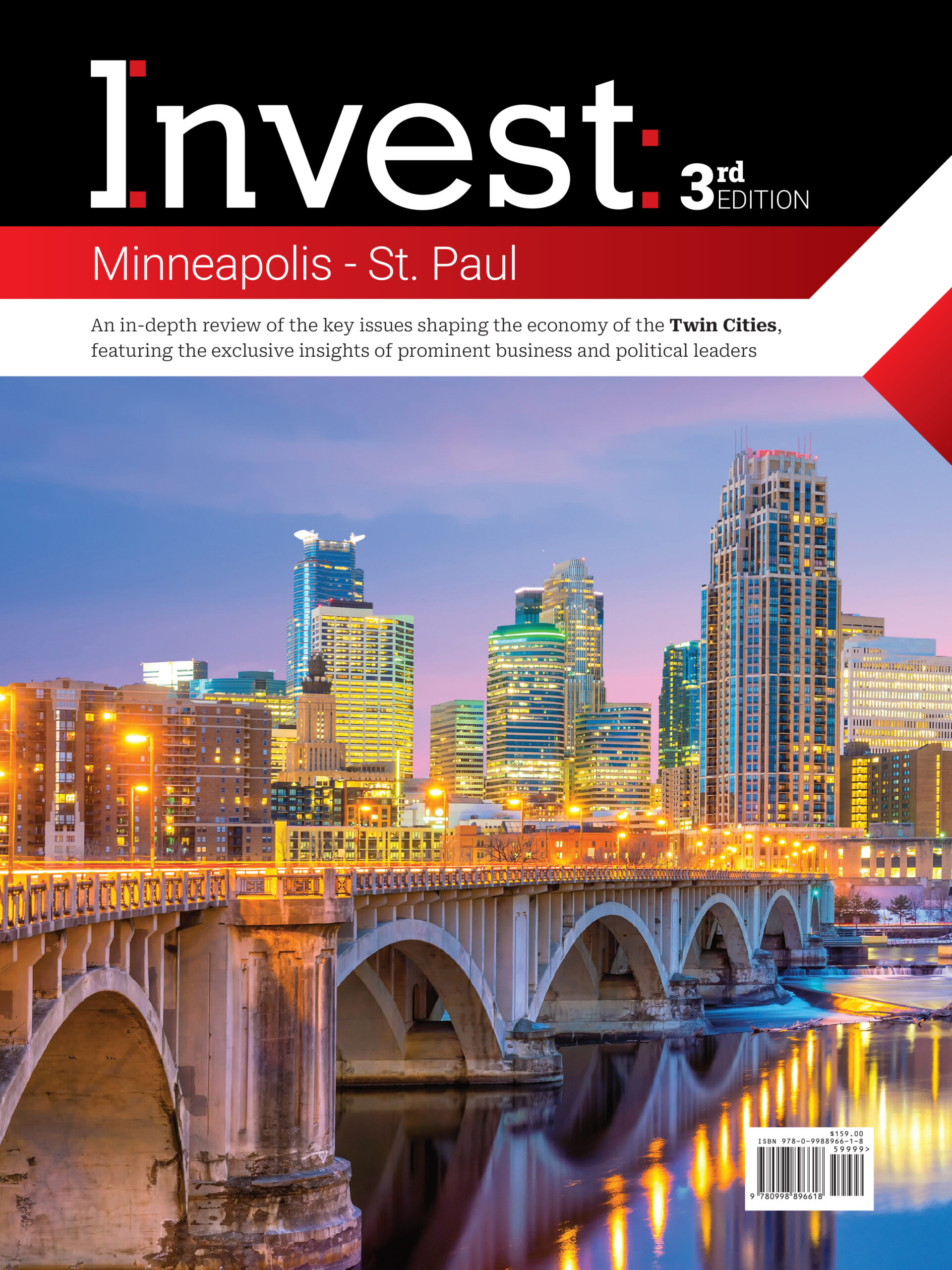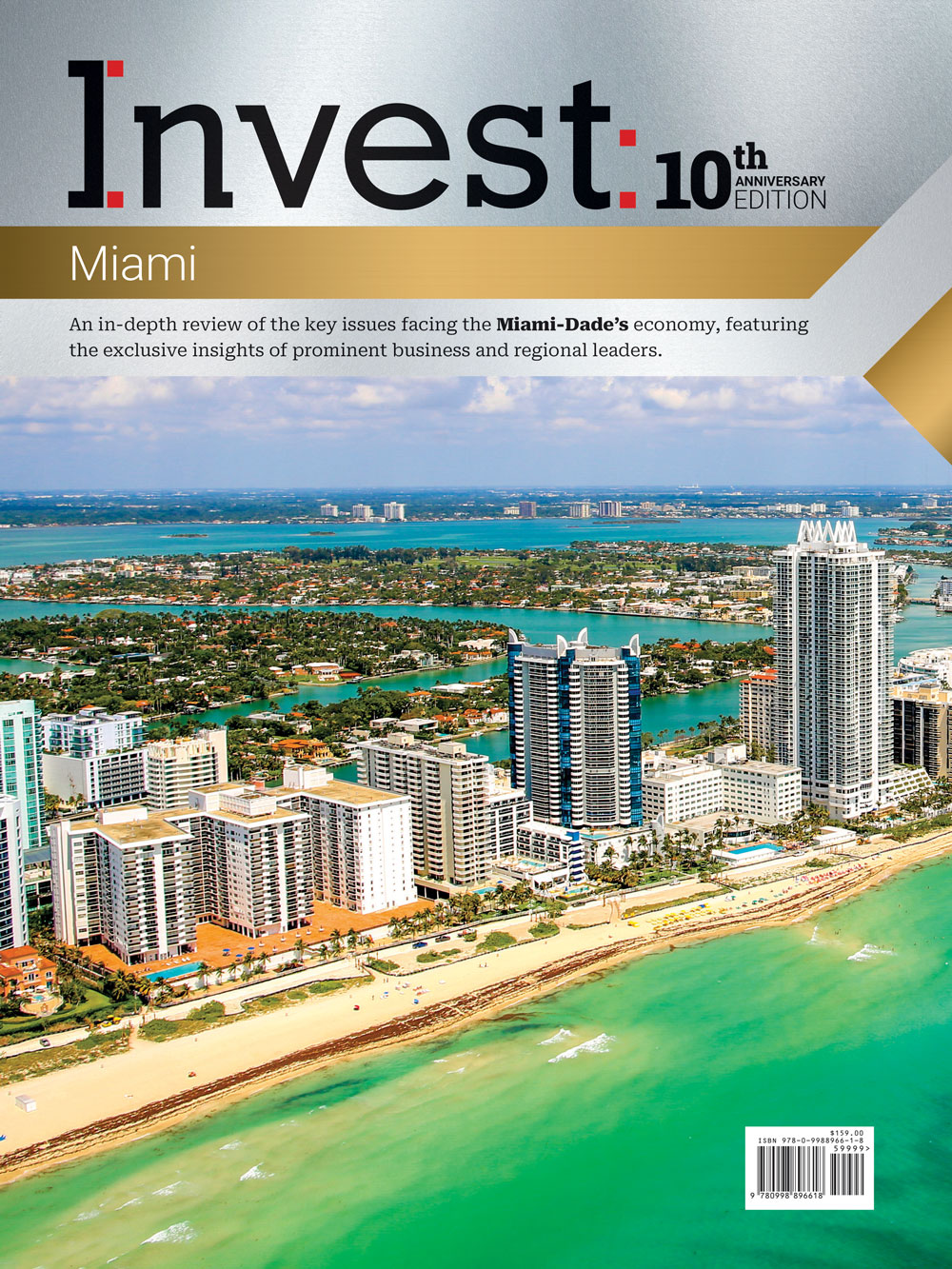Spotlight On: Jonathan Daniels, CEO & Port Director, Port Everglades Authority
 February 2022 — Port Everglades is one of the busiest cruise ports in the world, a leading container port in Florida and among the most active cargo ports in the United States. CEO and Port Director Jonathan Daniels spoke to Invest: about the Port’s expansion plans and how those plans have been impacted by the world’s supply chain disruptions. He also touched on the importance of Latin America to the Port’s business.
February 2022 — Port Everglades is one of the busiest cruise ports in the world, a leading container port in Florida and among the most active cargo ports in the United States. CEO and Port Director Jonathan Daniels spoke to Invest: about the Port’s expansion plans and how those plans have been impacted by the world’s supply chain disruptions. He also touched on the importance of Latin America to the Port’s business.
How is the Port planning to expand in 2022 and beyond?
In 2021, we accelerated our capital program and completed a $120 million parking garage and a $471 million project that is the largest-ever infrastructure project undertaken by the Port. The announcement that Disney will have a second home in Florida in Port Everglades is also important. There will be a level of investment by Disney, Broward County and Port Everglades on what will be a year-round operation starting in 2023. This opportunity means that Broward County as a whole has another strong anchor for tourism and hospitality. This aligns with our goal of diversifying our portfolio because these global brands run their around-the-world cruises and they commence in Port Everglades. We’re really beginning to see a portfolio that’s differentiating itself from some of the other markets and is moving toward the higher, luxury end.
We are also rolling out a concierge service that will handle our customer service similarly to the way in which fixed-base operators do it at an airport. The world’s largest cruise ship is currently sailing from this port, the Wonder of the Seas. Silver Sea, Viking Orion and Viking Star are ships that require that extra touch. We’ve decided this will be part of our brand standard.
How significant is this growth now that there are global supply chain disruptions in other locations of the country?
In regard to cargo, our organic growth program is honoring, investing and supporting our current customer base and making sure that their business grows. We’re seeing the terminal operators with more south trade, and an expansion on the east-west trade because our customer base is seeing growth there. On the energy side, the importance of Port Everglades really stands out. It was never so apparent as when the Colonial Pipeline ransomware attack occurred in May 2021 and basically shut down the pipeline that runs from the Gulf Coast all the way up to the New York-New Jersey area. That impacted the northern part of the state of Florida and certainly a lot of states along the pipeline. South Florida, however, was insulated because of the fact that Port Everglades is the facility that accommodates and handles jet fuel, regular fuel going into the service stations and diesel. Ultimately, we were able to withstand the situation but there was some panic buying as people didn’t understand the fact that we would not see disruptions. It shows the importance of the 15-seaport system as a whole.
The recent supply chain issues that we have felt globally and nationally are based on the congestion that has been primarily focused on Southern California. Through the governor’s leadership, we’ve showcased Florida’s ports as being able to accommodate the vessels currently in zones of congestion. We’re going to continue to push forward, making sure that the global shipping market understands the value of South Florida’s logistics. Port Everglades is pointing in the right direction. Because of our new services, we saw record numbers in October, July and November. We continue to bring in more equipment, bigger and better cranes, expanding and adding five additional berths, which are already paying dividends.
How did the pandemic affect your plans for expansion?
Delays at the port feed into the backups on the rail, which feed into the backups on the road, which stem from a lack of truckers and available equipment. Even if there were more truckers out there, we’re not entirely sure that the challenge would be met. There’s just not enough chassis, boxes, etc, to ultimately meet the needs. We have a challenge on a national scale. We are an extremely significant and important port. When it comes down to our strategy, it’s one that accommodates the post-pandemic surge in demand and makes a significant amount of investment in the infrastructure.
The challenge will be identifying the ways in which each port plays into the overall transportation and freight system. We’re making significant investments to allow for the next level of growth. Right now, we are at 1.2 million TEU units moving through the port. We’re building to accommodate close to 2 million TEUs, doubling our capacity to meet the challenge. Our new infrastructure improvements are only as good as the rail and road systems that meet the port. We can’t solve this challenge alone; all of us need to continue to make investments. We need a continued push toward a national freight policy that allows us to grow aligned. During the pandemic, competitors become collaborators. We can’t stop just because we are coming out of the pandemic. We need to be able to share information and share cargo. That’s hard because, often, we’re judged on the amount of cargo we handle. Now, we have a greater alliance between the ports, the cruise lines and the cargo shipping companies. We’re seeing a level of collaboration I’ve never seen at any time in the industry.
What are the benefits of fostering a relationship with Latin America?
We are the gateway to Latin America and we handle 13% of the nation’s trade with the continent. We are the fourth-largest import facility of perishables coming from Latin America in the United States. It’s extremely important to have agreements and memorandums of understanding with several Latin American ports. This allows us the opportunity to share information and look for opportunities to be able to increase trade. It becomes even more crucial in the long-term strategy of the United States for nearshoring and looking for options outside of Asia. We’re seeing an increase in production facilities in Latin America. As the economy grows and more people move to South Florida, the importance of the Everglades Port has never been clearer. It is rare that someone who lives in South Florida would not use a product that comes through the port.
For more information, visit:













